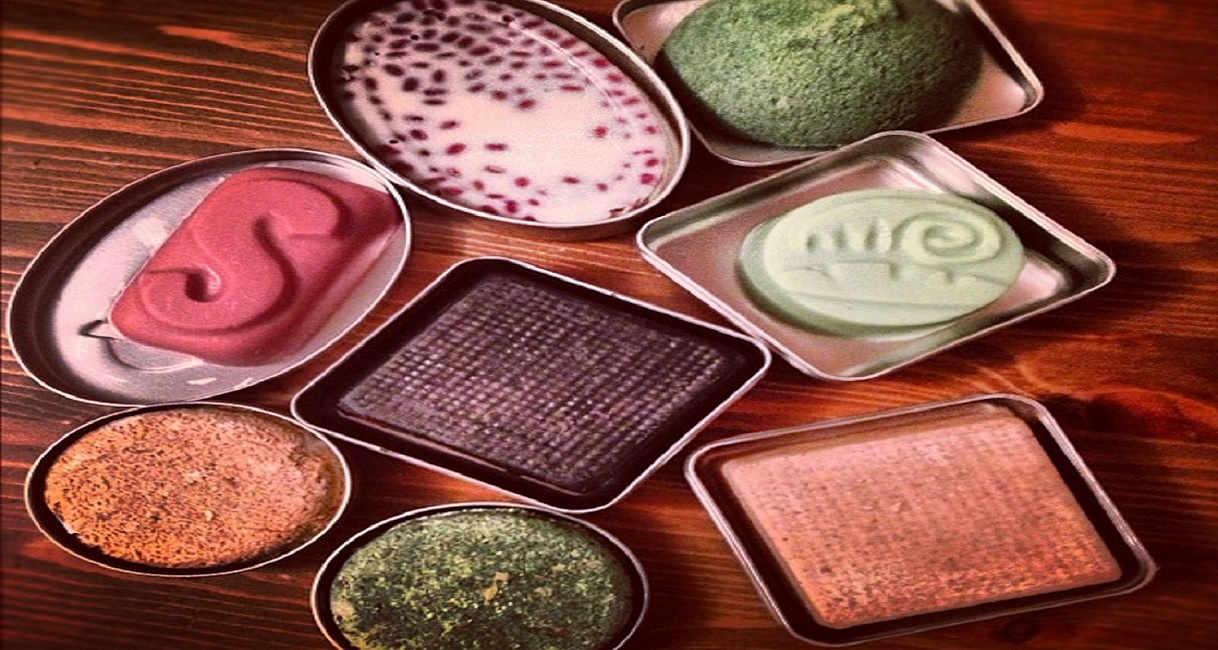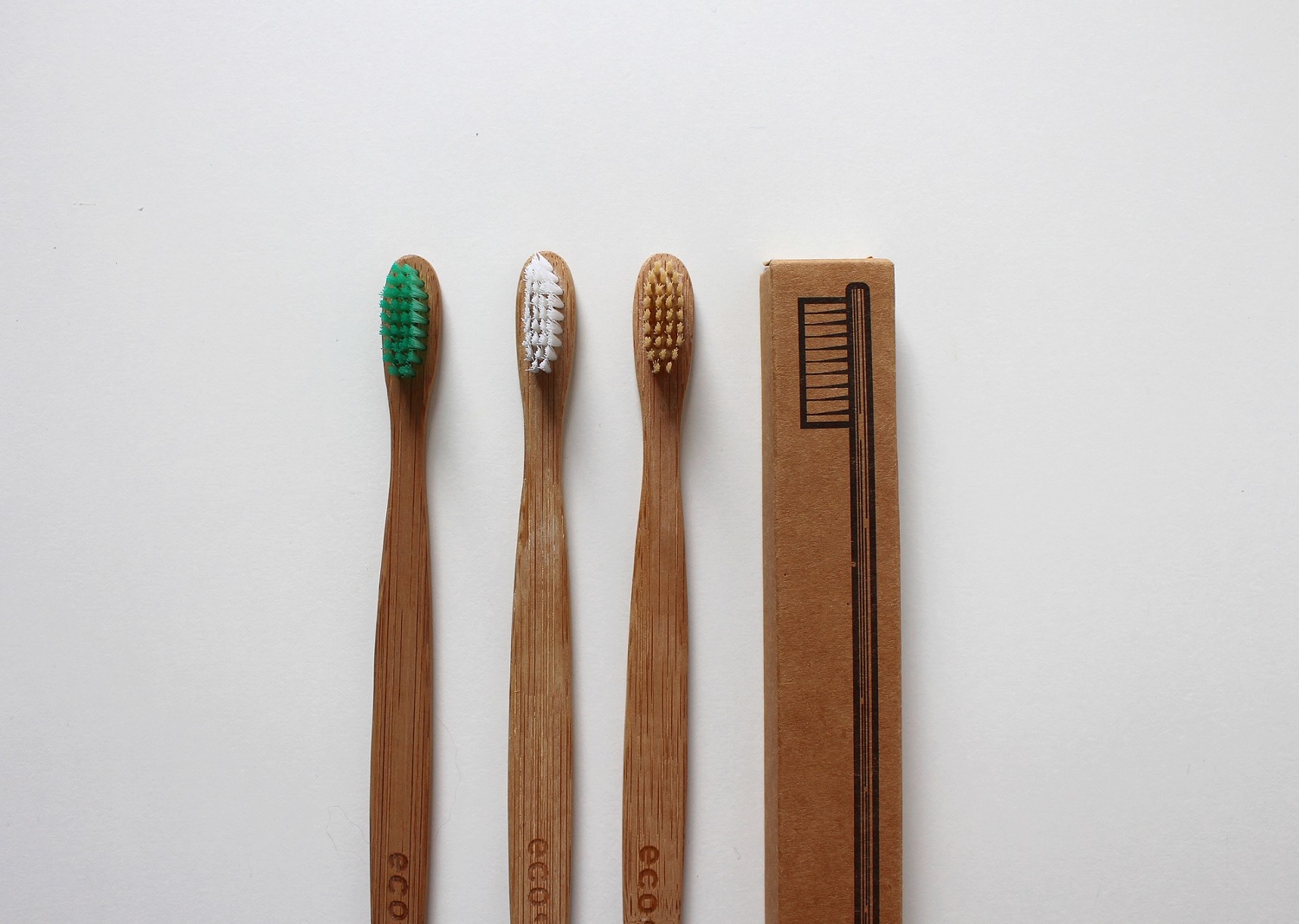Taking steps to reduce plastic packaging and products in our bathroom can seem daunting. But if you care about ecology, animals and the planet, we have a few tips for you that will help you reduce your plastic consumption. We will dive into the simple alternatives of bathroom products that you can start using immediately!
In glass, wood or paper
One of the biggest sources of bathroom plastics is soap in all forms – shower gel, body soap, hand soap, bubble bath, etc … and they are all basically the same thing. In this case, nothing compares to the good old bar soap wrapped in paper! Even shampoo, conditioner, face wash gel, or deodorant are now commonly available in solid form and without plastic containers. They contain all the active ingredients like their liquid brothers, except for water. Meaning, they have a smaller volume and do not have to be packed in plastic containers. One 60 g shampoo will last you about as long as 400 ml of liquid shampoo [1].

Picture source: Tony Webster, CC BY-SA 3.0
Personally, at first, I didn’t like solid shampoos, as they didn’t foam. Psychologically I had, then, the feeling that my hair didn’t get clean… I think that many people gave this kind of feedback, because today bar shampoos are already foaming ![]() ! I use one brand that I buy in an ordinary drugstore. There are more types available with different scents and so I like to switch now and then. I don’t miss liquid shampoo at all. In the end, I think it’s just a habit.
! I use one brand that I buy in an ordinary drugstore. There are more types available with different scents and so I like to switch now and then. I don’t miss liquid shampoo at all. In the end, I think it’s just a habit.
However, if solid soap or shampoo does not suit you, choose liquid, but packaged in glass or in refills. Although the refills are in plastic bags, they use significantly less plastic and can be stored and transported more efficiently. In comparison, 30 small plastic soap bottles require approximately the same space as 840 refill pouches [2].
If you are looking for a new experience, try visiting a zero-waste or package-free shop in your area. Most likely they will offer a refill station for care and cleaning products. Don’t forget to bring your own glass containers ![]() .
.
“Even shampoo, conditioner, face wash gel, or deodorant are now commonly available in solid form and without plastic containers.”
When it comes to dental care, we are recommended to replace our toothbrush every three months. That’s more than 300 toothbrushes per person in a lifetime. Toothbrushes are made of plastic that will not decompose during the life of the next three generations. Fortunately, there are now toothbrushes made of wood or bamboo, which can decompose. In the past, there were not many to choose from and their shape didn’t suit me, personally. Today, however, there are already several on the market, so you can choose the shape and hardness you were used to with a plastic one. They are readily available at regular drugstores. My whole family uses them, even ones for kids are already available.


Picture source: www.pixabay.com
The same goes for toothpaste tubes. Try toothpaste in a glass jar or even in a form of tablets. They are practical for traveling, but they are not yet commonly available and are quite expensive, so for now, only if you want to experiment ![]()
![]()
![]()
“One package of disposable period pads contains the same amount of plastic as four plastic bags!”
Another regular bathroom waste is menstrual products and its packaging. One package of disposable period pads contains the same amount of plastic as four plastic bags [3]! Cloth pads or menstrual panties are a more environmentally friendly solution. They can be washed and reused without having to throw them away. From my own experience, I like to use cloth pads overnight, I feel much more comfortable in them than in disposable ones. I think it’s because natural materials are more breathable. But using them all day is sometimes impractical, as they need to be changed and taken home, and they also do not absorb much odor, which can be a problem, especially in the summer. I, personally, prefer the menstrual cup during the day. Menstrual cups, being a very environmentally friendly option, also offer many other benefits: they are not drying, they do not contain toxic substances, they do not cause toxic shock syndrome (TSS) [4]. I have been using mine for more than 6 years now and I highly recommend it. It takes a while to get used to, but believe me, it’s worth it. You can read more information in this article.


Picture source: www.pixabay.com
Disposable vs. one that lasts
Do you know which other bathroom product gets washed out on beaches in huge amounts? Ear cotton swabs! Researchers in Australia estimate that cotton swabs make up overwhelming 60% of the sanitary waste found on beaches. Volunteers found over 18 000 swabs on just one beach [5]!


Picture source: www.pixabay.com
“Cotton swabs make up overwhelming 60% of the sanitary waste found on beaches.”
So how can we replace them? Actually quite easily, switch to either paper swabs or there are even washable and reusable ones. Paper swabs can be bought at almost any drugstore and works just as well as the plastic one. Make-up wipes and remover pads can also be easily replaced. Cotton cloths and cosmetic pads made from natural materials are suitable for washing after use and can be reused! Or simply wash them by hand, with soap, right after make-up removal. A few seconds underwater and ready for further use. You can use such pads for years!
Last but not least, we have disposable plastic razors. You can replace them with now again chic stainless steel razors. They will last basically forever. Plastic ones normally should be replaced after three to five shaves. Durable razors actually provide a better, cleaner shave, and spare blades are almost always cheaper than disposable ones. You save nature and at the same time your wallets.
So next time, when you go to the drugstore, try to choose products so that you don’t leave with a bag full of plastic packaging, but with a few natural products in glass, paper or reusable packaging.


0 Comments